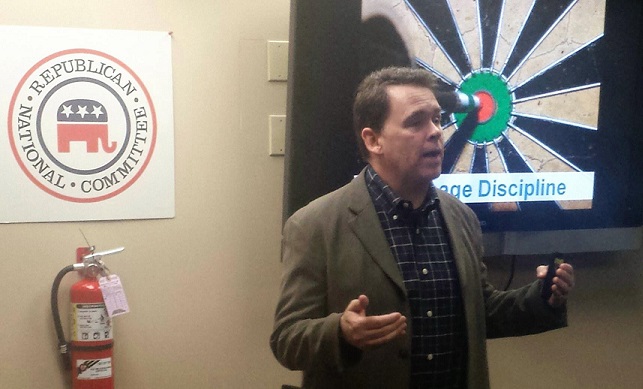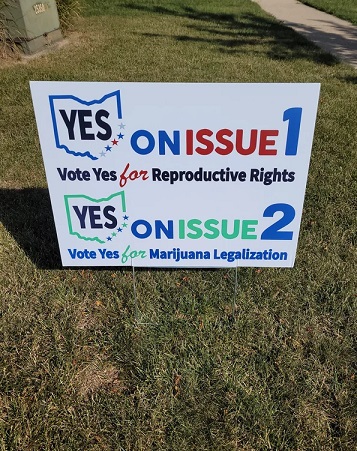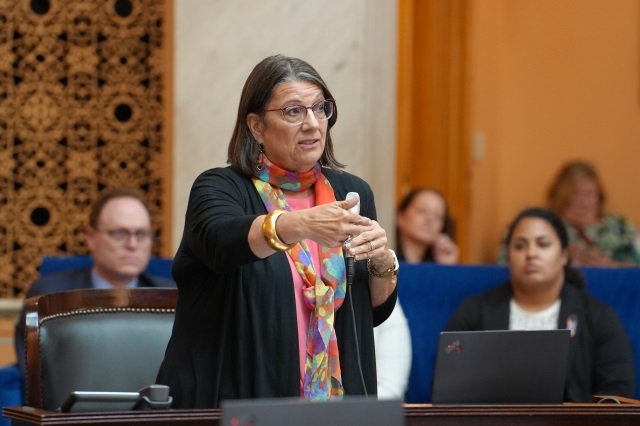Ohio Abortion Measure Sparks Early Voting Surge!
FEATURED PHOTO: US SENATOR SHERROD BROWN D-13TH DISTRICT

Yahoo.com, By Caroline Vakil-THE HILL, Posted November 7th 2023
An abortion ballot measure in Ohio is driving a surge in early voter turnout in what is seen as the most important referendum on reproductive rights this year.
Voters in the Buckeye State are weighing a proposed constitutional amendment next week that would establish abortion protections in the state’s constitution. Groups supporting and opposing the initiative have held rallies and enlisted political leaders and celebrities in recent weeks to draw attention to the race.
While recent polling indicates that a majority of Ohioans support the ballot measure, Democrats say they’re not taking anything for granted and believe it’ll come down to turnout.
“The poll that I’m the most interested in is the one that happens in the ballot box all the way up through Nov. 7,” said Ohio Senate Minority Leader
Ohio has become a testing ground for whether Democrats can pass abortion protections in a state that has increasingly trended red.
Abortion is legal in the state up to 22 weeks; a six-week abortion ban previously passed in the state is on hold as it awaits a decision by the Ohio Supreme Court, which has a conservative majority. The state became a flashpoint in the wake of the Supreme Court’s decision to overturn Roe v. Wade, when a 10-year-old rape victim was forced to travel out of Ohio to get an abortion.
Turnout has been high since early voting started on Oct. 11, with the Ohio secretary of state’s office noting that the state had seen more than 200,000 people voting early in person by Oct. 24 and roughly 110,000 mailed absentee ballots, according to The Columbus Dispatch.

In comparison, at this point during the August special election, 192,000 people voted in person early, and 93,000 mailed absentee ballots were received.
Groups on both sides of the issue have said they’ve made pointed efforts to reach out to voting blocs that they might not ideologically partner with otherwise.
Amy Natoce, press secretary for Protect Women Ohio — the opposition campaign to the abortion ballot measure — said that while the group has been working with local Right to Life chapters in addition to state and local GOP parties, they’ve also worked with groups like Democrats for Life of America, Feminists for Life and student groups.
“This isn’t your typical Republican-Democrat, liberal-conservative, pro-life-pro-choice debate that’s happening,” Natoce said. “Issue 1 would cement within our Constitution the most radical abortion regime in this country.”
Meanwhile, Ohioans United for Reproductive Rights (OURR), the group backing the abortion ballot measure, pointed to their partnership with Catholics for Choice.
“This is not a partisan thing,” said Gabriel Mann, a spokesman for the group. “We’re talking to Republicans, independents, Democrats, people in rural areas.”

Prominent elected officials, celebrities and others have notably waded into the race. Sen. Sherrod Brown (D-Ohio) — who’s up for reelection next year — posted a video on X, the platform formerly known as Twitter, drawing attention to the election. So, too, have former President Obama and Ohio native and musician John Legend.
Meanwhile, Gov. Mike DeWine (R), fresh off a landslide win in November, recorded an ad with his wife urging voters to reject the measure.
Ohio Secretary of State Frank LaRose, who’s vying for the GOP nomination to take on Brown next fall, and Sen. JD Vance (R-Ohio) are also among the Republicans who have joined the fray to bolster the opposition.
Recent polling has indicated that there’s support for Issue 1, though it may come down to the ballot language itself. A poll released by Institute for Civics and Public Policy at Ohio Northern University last week found 52 percent of those surveyed supporting the ballot measure based on the certified language, while 68 percent supported the measure as it was initially proposed by the group.
The certified language — created by LaRose’s office — was a point of contention for Democrats and abortion rights groups after some of the phrasing was changed, including changing the word “fetus” to “unborn child.”
Opponents of the measure argue it would allow for late-term abortions in the state and take issue with exceptions post-viability in cases implicating the life of the patient or their health.
Republican strategist Mark Weaver argued that the word “health” created an “elastic exception” that included “not just the physical health, but the mental health, the emotional health.”
Democrats have pushed back aggressively on that criticism. OURR’s website points to Ohio Department of Health 2022 data on abortions that showed only a small fraction of abortions occurred between 21 and 24 weeks of pregnancy, with zero reported after that timeline.
Even some groups opposing Issue 1 have criticized their own side for seizing on the idea that the ballot measure would allow late-term abortions. End Abortion Ohio President Austin Beigel argued that while he believed the measure would allow for abortions later in a patient’s pregnancy, the emphasis shouldn’t be on that.
“What I disagree with on the pro-life movement is putting so much emphasis on that, oh, if our conviction really is that life begins at conception, then an abortion that happens at 30 weeks is not worse than one that happens at four weeks,” Beigel said.

Some Republicans have tried to reverse themselves on the issue. DeWine, who signed the six-week ban in 2019, suggested in an interview on “The State of Ohio” last week that if Issue 1 is defeated in November, exceptions for rape and incest “certainly will be part of what together we would all come up with.”
Groups on either side of the issue see high stakes for both the state and the country at large.
Weaver, the Republican strategist, noted that the move could also prompt Republicans to pass ballot measures that enthuse their own base.
“I also expect you’ll see conservatives putting forth constitutional amendments on politically popular positions that will drive the left crazy, particularly around the area of guns and the rights of people to carry guns and protect themselves with guns,” he said. “And so this opens up many more constitutional amendments to come, which is really not where lawmaking is supposed to be done.”
Democrats, meanwhile, worry what the future will bring for young people in the state should the abortion ballot measure fail Tuesday.
“We’re at a real turning point in terms of whether or not young people especially even see Ohio as a state they want to live in,” said Antonio, the state Senate minority leader. “And I do believe that the outcome of this election and of this ballot measure is gonna send a message to young people on whether or not there’s a future for them here in Ohio.”








